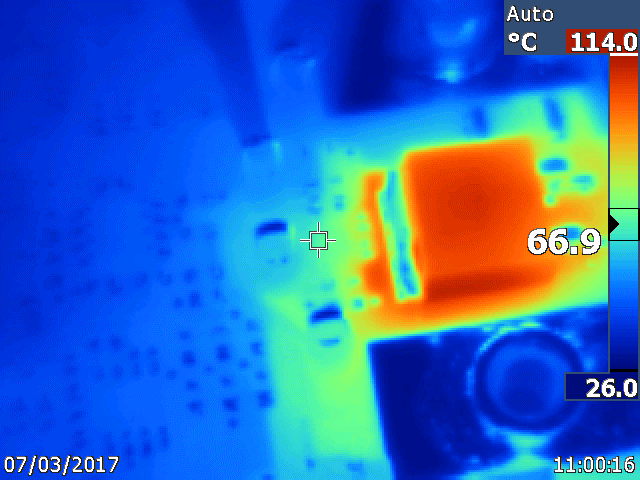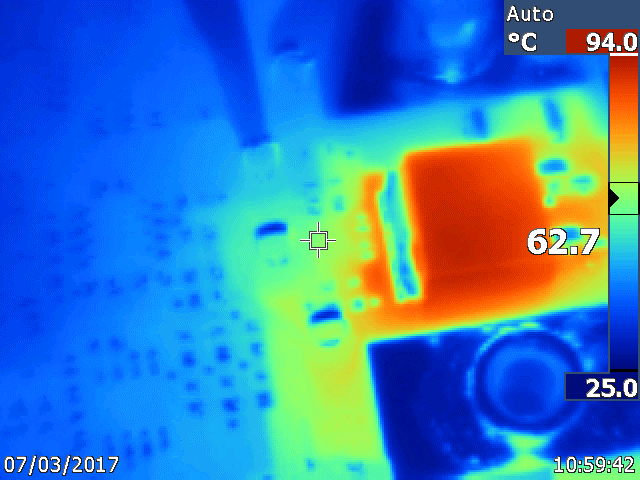TIDT293 October 2022
3.6 Overtemperature Protection
The overtemperature protection uses the LM26LVCISD-075, a 75ºC temperature sensor to shut down the driver and load switch. When thermal shutdown occurs, the sensor trips and turns off the driver and load switch circuit by pulling the power-down signal high. The overtemperature LED, D5, turns on to indicate that thermal shutdown has occurred. During thermal recovery, the LED turns off, and normal operation resumes.
For testing a 15-V, 5-A, 66-ms low-level pulse was used. The high-level pulse was set to 25 A at the minimum width of 11 μs. The average power dissipation was 5 W.
Thermal shutdown occurs when the sensor reaches a case temperature of about 67ºC. The thermal plot shows that the FET reaches around 114ºC. The results in the following image use a PSMN008-75B MOSFET in the 125-A, 50-V variant.
 Figure 3-11 LM26LVCISD-075, PSMN008-75B
Load Step Board Thermal Shutdown
Figure 3-11 LM26LVCISD-075, PSMN008-75B
Load Step Board Thermal ShutdownThermal recovery occurs at a lower temperature of about 63ºC. The thermal plot shows that the FET reaches around 94ºC. The results in the following image use a PSMN008-75B MOSFET in the 125-A, 50-V variant.
 Figure 3-12 LM26LVCISD-075, PSMN008-75B
Load Step Board Thermal Recovery
Figure 3-12 LM26LVCISD-075, PSMN008-75B
Load Step Board Thermal Recovery